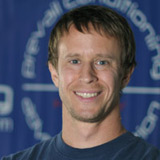Top 10 Mistakes Athletes Make in Their Training Programs
And How to Correct Them
Athletes are not immune.
Until recently, much of what was done in the realms of strength and conditioning was heavily influenced by the fitness and bodybuilding world. Matter of fact, though we’ve made big strides in moving the athletic community away from that type of “body part” and “aesthetics” training, it is unfortunately still happening. It’s not uncommon to see athletes doing their “beach workout” (chest, biceps, and abs). This type of workout will feed into postural imbalances, chronic injuries, and biomechanical overuse patterns, or simply poor on-field performance at best.

While isolation work isn’t void from an athlete’s program, the applied research reveals an “isolation for integration” perspective as opposed to making your biceps big enough to stretch out your jersey while standing in the batter’s box.
For some perspective and insight in the athletic populations, I sought out local athletic therapy expert Diana Palmer, ATC, to brainstorm about the most detrimental mistakes we encounter and how to avoid and/or correct for them. Here is what she said:
1. Improper technique (including trainers teaching athletes improper technique): It may be the “right” exercise but performed the wrong way. We see this a lot. Case in point: Olympic Lifts. Excellent exercises for most athletes, but very technically demanding and often poorly understood.
Correction: See a qualified Strength and Conditioning or USA Weightlifting coach.
2. Building power and strength before developing a foundation: Gray Cook says it well: “Don’t add strength and speed to poor movement patterns.” It simply makes poor movement worse. Movement quality (technique) must precede movement quantity (strength/speed/power). We advocate a “technical failure” philosophy with our athletes. That means we don’t let our athletes perform any reps (or use loads) beyond perfect technique.
Correction: If it doesn’t look good, don’t do it. Ask a qualified trainer (biomechanics, functional movement screen, reactive neuromuscular training, or corrective exercise specialist) to evaluate your technique and/or offer corrective exercise help to improve improper movement patterns.
3. Selecting incorrect/nonfunctional exercises: Focusing on bicep curls instead of pull ups; focusing on bench pressing numbers when they can’t even do a push up; focusing on leg pressing instead of front squatting. Athletes need to be concerned with how strength and power exercises improve their sport and not simply what “numbers” they can put up on the record boards. Are you a basketball player or a powerlifting competitor?
Correction: Utilize free weight exercises over machines; seek balanced ratios in upper body pushing and pulling muscles as well as quad and hamstring dominant lifts; do single-limb exercises and not just dual-limb (e.g. one-leg squats and one-arm bench presses) since you run on one leg at a time!
4. Conditioning incorrectly for the sport: Referred to as “energy system development” (ESD), athletes’ conditioning programs often hurt more than help. We see football, baseball, tennis, track, or swim sprinters, and volleyball players doing long, slow, steady-state training (i.e. 20-60 minutes) to prepare for their sport. That’s almost the worst thing they could do. These are all high speed/power sports. Power athletes that utilize steady-state training are conditioning themselves to do one thing: be slow.
Correction: Perform interval-related conditioning programs that more closely mimic the work-to-rest ratio of your sport.
5. Poor hydration: This includes pre-, during, and post-training hydration. Insufficient hydration can negatively impact training performance 10 to 30 percent. That translates to a 20-plus pound decrease for a 200-pound bench presser or 3-plus inch decrease for a 30-inch jumper.
Correction: Start drinking 10 to 15 ounces of fluid every 15 minutes starting 30 to 60 minutes prior to training session, and continue until post-workout bodyweight returns to pre-workout levels.
6. Poor post-workout nutrition: Nutrition post-activity is necessary for recovery and regeneration. Most agree there is a metabolic window that is open up to 45 minutes post-activity. If you don’t get good nutrition in this time frame, you miss the boat and recovery will simply be slower.
Correction: Seek advice from a qualified sports nutritionist. Worst-case scenario, get a meal with a full spectrum of quality fat (essential, unsaturated), protein blend (whey, casein, etc.), and higher glycemic index carbohydrates.
7. Not addressing flexibility/mobility deficits: Deficits in these areas affect ability to perform biomechanically correct movement. If they are ignored, the motor patterns developed are compensatory (at best) and lead to eventual injury patterns.
Correction: Do self-myofascial release, mobility work, and active-isolated or corrective stretching prior to/during training sessions; and static or neuromuscular stretching and extra mobility work post-training and between training sessions.
8. Not coming ready to train (mentally, emotionally): Allowing other aspects of life to get in the way or simply not preparing. It’s been said that the will to win is not as important as the will to prepare to win. The psychological state for preparation is necessary to maximize performance levels.
Correction: Prepare to train. Come physically and mentally ready. Seek counsel from a sports psychologist to find ways to motivate yourself.
9. Thinking it’s all about weight: Most commonly a mistake among male athletes. Weight’s a significant thing, but it’s not the only thing. As mentioned before, correct movement patterns must come before strength. Secondly, strength should set the stage for power in most athletes’ training. Since true strength is achieved at very slow velocities, if all you do is get strong, you may very well be the strongest/slowest guy on the field.
Correction: Make sure the movement looks good, then make it strong, then train it through the full spectrum of strength and velocity.
10. Not doing homework: This has to do with soft tissue work, mobility work, flexibility work, corrective exercise, sleep, etc. We often tell our athletes that we can only train as hard as they can recover from. The athlete’s job is recovery, so their job isn’t done when they leave the gym. In fact, often what happens in the other 22-23 hours during the day has a drastic impact on what we can do with them during their training session.
Correction: Sleep 7-10 hours/night, do 15-30 minutes of “homework” each night.



